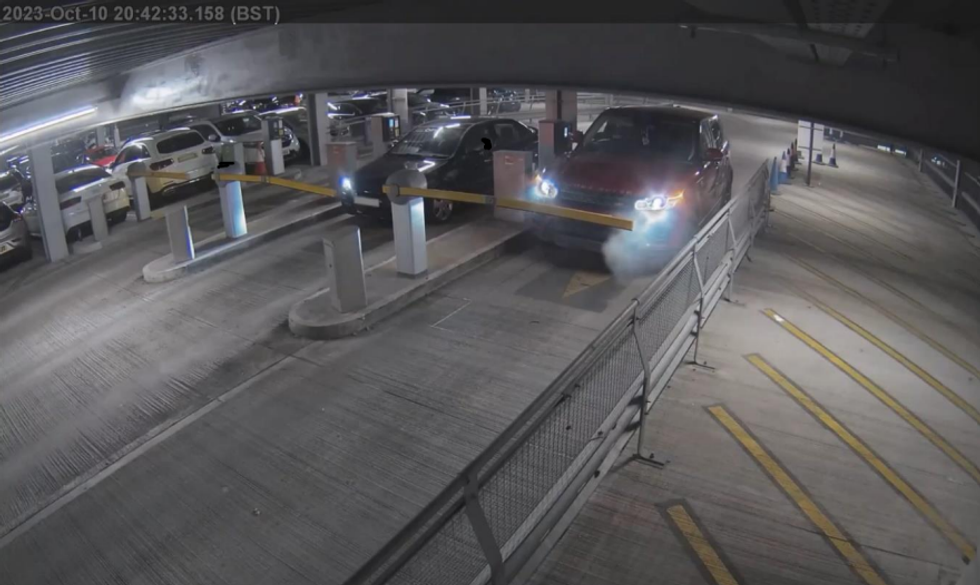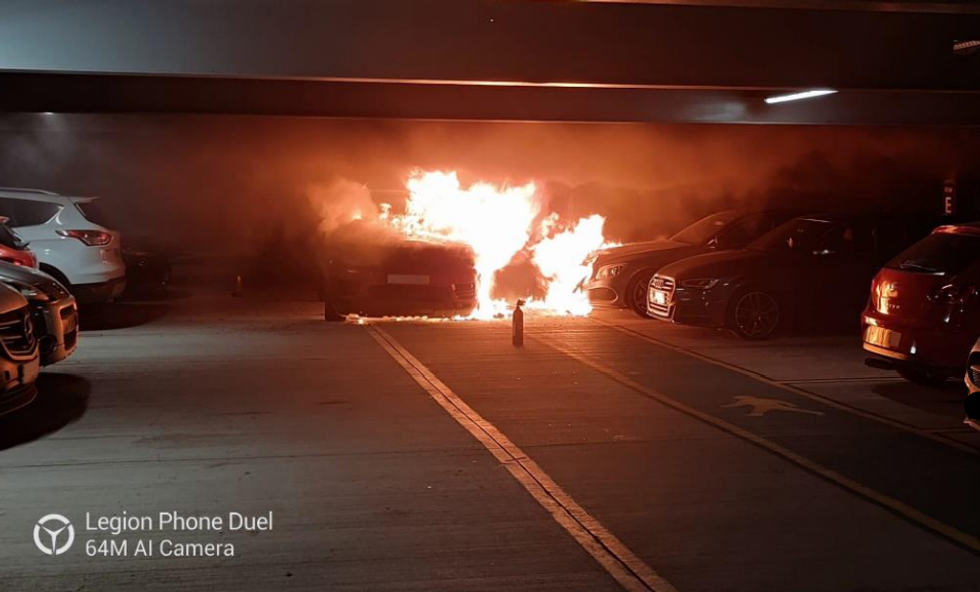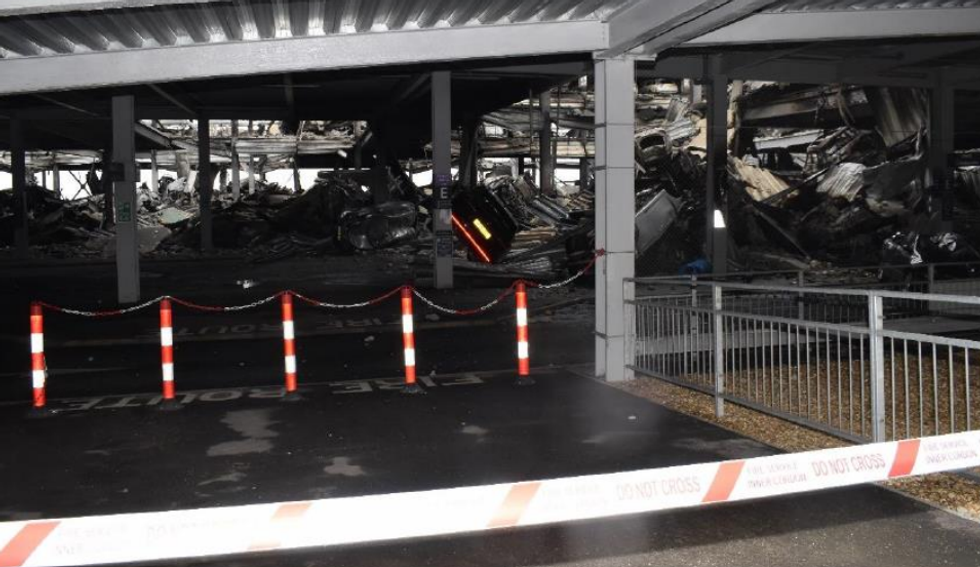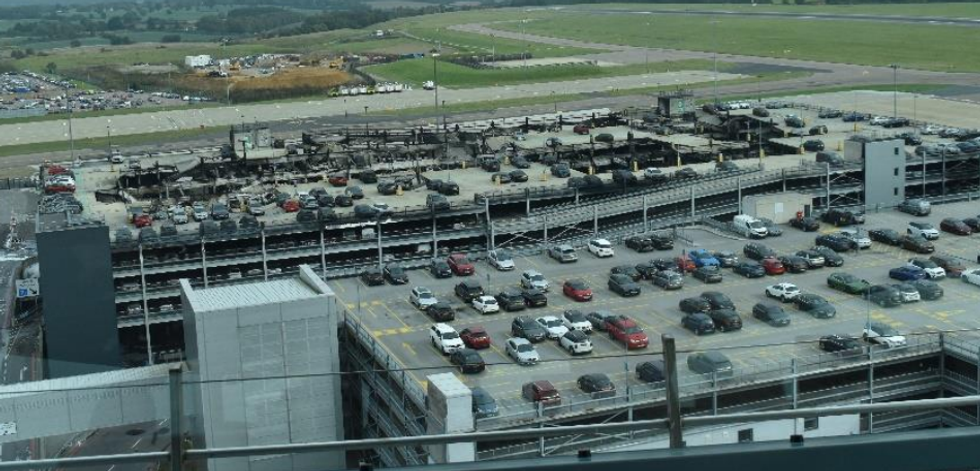A report into the Luton Airport car park fire highlighted how electric vehicles were not to blame
PA/GETTY/BEDFORDSHIRE FIRE AND RESCUE SERVICE
The vehicle which started the fire was already smoking when it drove into the car parking complex
Don't Miss
Most Read
Trending on GB News
The London Luton Airport car park fire, which impacted more than 1,350 vehicles last year, was not caused by an electric vehicle, as a report found a diesel Range Rover was to blame.
A newly released report from Bedfordshire Fire and Rescue Service (BFRS) included new details about a major fire at London Luton Airport's Terminal Car Park 2.
The fire took place on October 10, 2023, at London Luton Airport, when a privately owned, diesel-powered Range Rover Sport was found to have caught fire "accidentally".
The blaze spread to involve 1,352 vehicles and led to a partial structure collapse, which has since been fully demolished. Four firefighters were injured, with two suffering from heat exhaustion and two from smoke inhalation.
Do you have a story you'd like to share? Get in touch by emailingmotoring@gbnews.uk

The Range Rover was seen smoking as it drove into the car park
BEDFORDSHIRE FIRE AND RESCUE SERVICE
The fire was reported at 8.47pm, with the first two fire engines arriving eight minutes later. The Range Rover was seen smoking as it entered the car park, as seen through CCTV images.
It proceeded through the barrier and drove to the third floor where the driver noticed "visible flames from the front of the vehicle".
Councillor Jacqui Burnett, Bedfordshire Fire and Rescue Authority Chair said: "The fire presented challenges, but I am incredibly proud of the rapid response and professionalism shown by our teams and our partners.
"The operation not only safeguarded the airport but also highlighted the strength of the Service’s multi-agency coordination.

Fire engines arrived at the scene within eight minutes
BEDFORDSHIRE FIRE AND RESCUE SERVICE
"While our firefighters managed to contain and successfully extinguish the fire, reports like these are essential to ensure the Service learns and continues to improve its response in the future."
The report also looked at the impact of electric vehicles on the spread of the fire and noted how many on social media were speculating that the cause of the fire was an EV.
At the time, Bedfordshire FRS stated that the start of the fire was believed to be a diesel vehicle rather than an EV, which was later found to be a red, diesel-powered Range Rover Sport.
A previous report following a fire at Stavanger Airport in Sola, Norway, also noted how social media had influenced speculation about whether electric vehicles contributed to the blaze.

More than 1,350 vehicles were involved in the fire spreading
BEDFORDSHIRE POLICE
The report found that two main things contributed to the fire. These included strong winds helping to accelerate the spread of the fire and the leakage of fuel from burning vehicles contributed to the fire spreading.
The Luton Airport report found a similar pattern where running fuel fires and a 10mph wind exacerbated the flames, in addition to the design of the car park and narrow gaps between the vehicles.
Chief Fire Officer Andy Hopkinson said: "Evidence derived from global research demonstrates the effectiveness of sprinklers in controlling fires in car parks, with property loss about 95 per cent lower than that of an uncontrolled fire.
"We will be using the learning from this incident to support the National Fire Chiefs Council (NFCC) in lobbying for a change in national guidance and legislation to make the provision of automatic water suppression systems (AWSS), such as sprinklers, a requirement in multi-storey car parks."
LATEST DEVELOPMENTS:

The aftermath of the Luton Airport car park fire
BEDFORDSHIRE POLICE
The Chief Fire Officer is now supporting the NFCC in its call on the Government to carry out further and in-depth research into fires in car parks and the design of car parks.
The NFCC has already called for a review of the requirements for car parks to review products and materials used in modern vehicles, as well as the promotion of "automatic water suppression systems".








